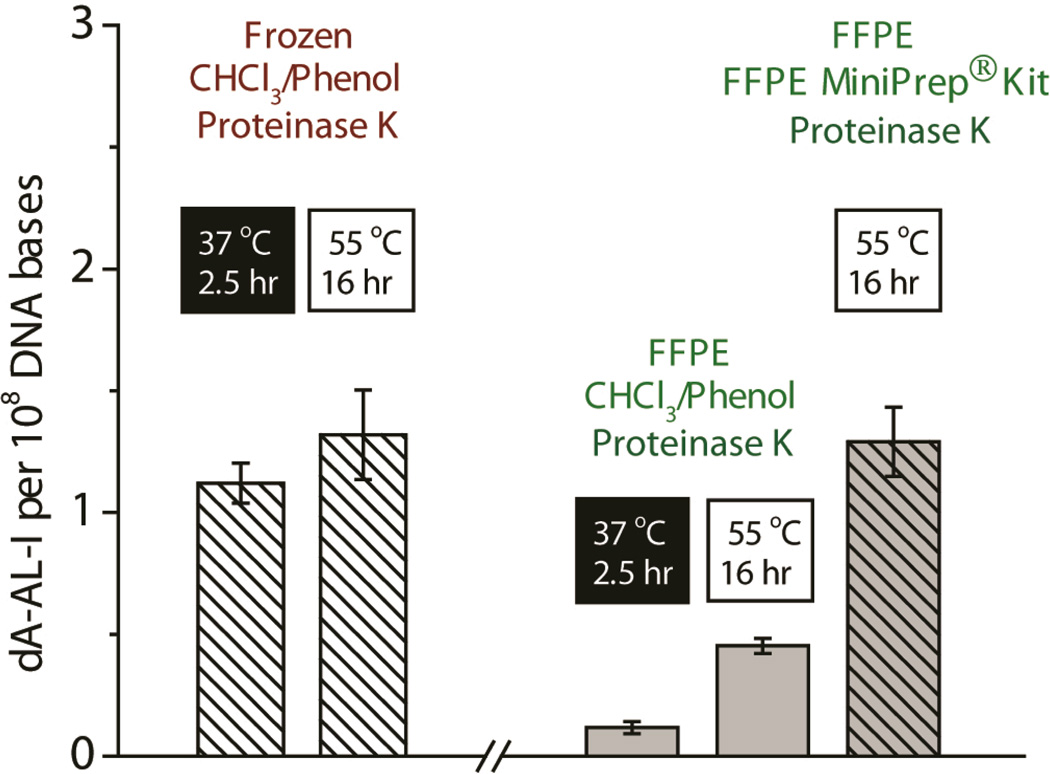Figure 2.
The effect of proteolysis and extraction methods on the recovery of dA-AL-I adducts from the freshly frozen and FFPE liver tissue from mice treated with AA-I (0.1 mg/kg body weight). Mean adduct levels are shown (N = 4 and SD). In freshly frozen tissue, high recovery of AL-DNA is achieved by proteinase K treatment of the nuclear pellet at 37 or 55 °C, followed by retrieval of DNA by the CHCl3/phenol method. Both elevated temperature (55 °C) with proteinase K treatment and processing of FFPE tissue with the ZR MiniPrep™ kit are required to efficiently remove crosslinks in DNA and recover dA-AL-I in high yield. One-way ANOVA, P < 0.0001; Dunnett’s multiple comparison post-test reveals that dA-AL-I adduct levels in the nuclear pellet of FFPE tissue heated at 37 or 55 °C with proteinase K and processed with CHCl3/phenol are significantly different from the level of adducts in the nuclear pellet of freshly frozen tissue heated at 37 °C with proteinase K, followed by processing of DNA with CHCl3/phenol (P < 0.01). The level of dA-AL-I in FFPE tissue processed with the ZR MiniPrep™ kit is not significantly different from the level of dA-AL-I in freshly frozen tissue (P > 0.05).

